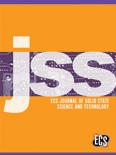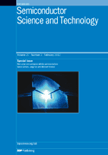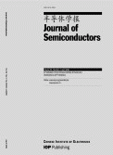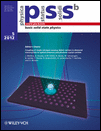
Journal of Computational Electronics
metrics 2024
Shaping the Future of Electronic Materials and Engineering
Introduction
Journal of Computational Electronics, published by Springer, is a leading international journal that caters to the interdisciplinary field of computational modeling and simulation, particularly within atomic and molecular physics, electrical and electronic engineering, and electronic materials. Since its inception in 2002, the journal has established itself as an essential resource for researchers, professionals, and students, providing a platform for disseminating innovative research and advancing methodologies related to electronic systems. With its current Q3 ranking across multiple categories—including Atomic and Molecular Physics, Engineering, and Materials Science—the journal plays a significant role in shaping the future of computational approaches in relevant fields. While it is not an open access journal, its rigorous peer-review process ensures high-quality content, reflecting the latest advancements and insights. The Journal of Computational Electronics continues to contribute to scholarly discourse, supporting the development of cutting-edge technologies and theoretical frameworks essential for the evolving landscape of electronics.
Metrics 2024
 0.29
0.29 2.20
2.20 2.00
2.00 46
46Metrics History
Rank 2024
Scopus
IF (Web Of Science)
JCI (Web Of Science)
Quartile History
Similar Journals

SEMICONDUCTORS
Exploring the depths of atomic and molecular physics.SEMICONDUCTORS, published by PLEIADES PUBLISHING INC, is a prominent journal that provides a platform for researchers and professionals in the fields of Atomic and Molecular Physics, Condensed Matter Physics, and Electronic, Optical and Magnetic Materials. With an ISSN of 1063-7826 and an E-ISSN of 1090-6479, the journal has been diligently disseminating knowledge since its inception in 1996 and continues to pave the way for innovative research until 2024. Although currently unclassified in the Open Access model, its influence is underscored by its rankings in Scopus, where it ranks in the 21st-22nd percentile across critical scientific categories. SEMICONDUCTORS serves as an essential resource for cutting-edge research, fostering a greater understanding of semiconductor materials and their applications, thereby assisting the scientific community in pushing the boundaries of technology and innovation.

ECS Journal of Solid State Science and Technology
Catalyzing Breakthroughs in Solid State TechnologiesECS Journal of Solid State Science and Technology, published by the Electrochemical Society, is a prominent journal dedicated to the advancement of research in the field of electronic, optical, and magnetic materials. With an ISSN of 2162-8769 and an E-ISSN of 2162-8777, this journal has established a significant presence since its inception in 2012, spanning critical developments in solid-state science that are essential for innovative technologies. Operating within the United States and recognized for its global outreach, it holds a respectable Q3 category ranking in the materials science category as of 2023, reflecting its commitment to high-quality research and its role in bridging theoretical and applied aspects of materials science. Researchers, professionals, and students alike will find vital information and cutting-edge studies that further the understanding and applications of solid-state technologies. The journal is accessible to an extensive audience, making it an invaluable resource for those engaged in the ever-evolving landscape of materials science.

SEMICONDUCTOR SCIENCE AND TECHNOLOGY
Exploring the forefront of materials science and engineering.Semiconductor Science and Technology is a pivotal journal in the fields of condensed matter physics, electrical and electronic engineering, and materials science, published by IOP Publishing Ltd. With an ISSN of 0268-1242 and an E-ISSN of 1361-6641, this esteemed journal has been disseminating groundbreaking research since 1986 and is set to continue through 2024. Recognized in the latest categorizations, it holds a notable Q2 ranking in Condensed Matter Physics, Electrical and Electronic Engineering, and Materials Chemistry, alongside a Q3 ranking in Electronic, Optical, and Magnetic Materials, highlighting its significant contribution to the advancement of these disciplines. Although it does not operate under an open access model, the journal provides critical access options for researchers and professionals seeking to foster innovation and collaboration within the semiconductor community. As a vital resource, Semiconductor Science and Technology not only supports the dissemination of high-quality research but also serves as a platform for emerging trends and developments that are shaping the future of semiconductor technology.

InfoMat
Driving Innovation in Materials Research for a Sustainable FutureInfoMat is a premier open-access journal published by WILEY that serves as a vital resource for scholars and practitioners in the fields of materials science, materials chemistry, and related disciplines. Since its inception in 2019, this journal has rapidly ascended in academic stature, currently holding a prestigious Q1 ranking across multiple categories, including Electronic, Optical and Magnetic Materials, Materials Chemistry, and Surfaces, Coatings and Films, showcasing its significant impact and relevance. With a commendable impact factor and a comprehensive scope, InfoMat provides a platform for high-quality research that drives innovation in the materials domain, appealing to researchers, professionals, and students alike. The journal’s open-access model enhances visibility and accessibility of cutting-edge studies, fostering a collaborative and informed scientific community. Based in the United Kingdom, InfoMat continues to shape the future of materials research through its commitment to excellence and accessibility.

Journal of Ovonic Research
Exploring Innovative Pathways in Electronics and Optics.Journal of Ovonic Research is a distinguished publication dedicated to advancing the fields of electronic, optical, and magnetic materials. Published by VIRTUAL CO PHYSICS SRL, this journal offers a platform for researchers to share innovative findings and developments that push the boundaries of technology and materials science. With an ISSN of 1842-2403 and an E-ISSN of 1584-9953, it provides an important service to the academic community, particularly within Romania and beyond. Despite its recent inception in 2011, the journal has gained traction in the academic landscape, reflecting a Q4 quartile ranking in crucial categories such as Electronic, Optical and Magnetic Materials, as well as in Physics and Astronomy. The Scopus rankings further underscore its positioning, ranking within the 25th to 37th percentile across various disciplines, making it a valuable resource for professionals and students alike. Although the journal currently operates on a non-open access basis, it remains committed to exploring the latest advancements in materials science, encouraging interdisciplinary collaboration and fostering a deeper understanding of surface, coating, and film technologies. As the field evolves, Journal of Ovonic Research stands as a beacon for scholarly communication, bridging the gap between research and practical application.

Journal of Semiconductors
Connecting researchers to the pulse of semiconductor technology.Journal of Semiconductors, published by IOP Publishing Ltd in the United Kingdom, is a leading scholarly journal that has established itself as a premier platform for disseminating high-quality research in the fields of condensed matter physics, electrical and electronic engineering, and materials chemistry. Since its inception in 2009, the journal has featured research articles that delve into the fundamental and applied aspects of semiconductor technologies, making significant contributions to advancements in electronic, optical, and magnetic materials. The journal boasts an impressive Q1 ranking in several categories, including Condensed Matter Physics and Electronic, Optical and Magnetic Materials, reflecting its influential role in shaping contemporary research. With a dedicated audience of researchers, professionals, and students, it aims to foster collaboration and innovation in this dynamic field. Although it operates under a traditional access model, the journal offers various publication options that ensure the visibility and impact of its articles. Through its rigorous peer-review process and commitment to excellence, the Journal of Semiconductors continues to be an invaluable resource for those seeking to stay at the forefront of semiconductor research and technology.

Semiconductor Physics Quantum Electronics & Optoelectronics
Exploring the Intersection of Physics and TechnologySemiconductor Physics Quantum Electronics & Optoelectronics, published by the NATL ACAD SCIENCES UKRAINE, INST SEMICONDUCTOR PHYSICS, stands as a significant platform in the fields of semiconductor physics, quantum electronics, and optoelectronics. Since its transition to Open Access in 1998, the journal has facilitated widespread dissemination of innovative research, advancing our understanding of critical applications in technology and materials science. Based in Ukraine, this journal embraces a global readership, supporting researchers and professionals aiming to share valuable findings in a rapidly evolving scientific landscape. With a solid reputation reflected in its category quartiles—including Q4 in Atomic and Molecular Physics, Q3 in Electrical and Electronic Engineering, and Q4 in Electronic, Optical and Magnetic Materials—the journal remains committed to enhancing the visibility and impact of contemporary research. Spanning 2019 to 2024, it invites submissions that contribute to the ongoing dialogue in these pivotal areas, ensuring that new insights reach the academic community swiftly and effectively.

Advanced Photonics Research
Advancing Knowledge, Shaping InnovationAdvanced Photonics Research is a leading open-access journal published by WILEY, dedicated to advancing the field of photonics through rigorous research and comprehensive reviews. With its ISSN 2699-9293, the journal aims to disseminate innovative findings in areas such as photonic materials, devices, systems, and applications. Since transitioning to an Open Access model in 2020, it has significantly increased accessibility for researchers, professionals, and students alike, promoting wider dissemination and collaboration within the global photonics community. The journal's commitment to high-quality, peer-reviewed content ensures it remains an essential resource for those seeking to stay at the forefront of photonics research. Positioned to influence both academia and industry, Advanced Photonics Research is an invaluable platform for sharing cutting-edge discoveries that drive the future of technology.

Journal of Semiconductor Technology and Science
Pioneering Research in Semiconductor TechnologyThe Journal of Semiconductor Technology and Science, published by the IEEK PUBLICATION CENTER, serves as a vital platform for advancing the field of semiconductor technology and materials science. With its ISSN 1598-1657 and E-ISSN 2233-4866, this journal has been pivotal since its inception in 2005, continuing to shed light on innovative research until 2024. Although currently classified in the Q4 category for both Electrical and Electronic Engineering and Electronic, Optical and Magnetic Materials, it remains a crucial resource for those in industry and academia alike, providing in-depth analyses and findings that explore the complexities of semiconductor applications. Researchers and professionals will find value in its comprehensive articles that address current trends and future directions in semiconductor technologies. This open-access journal, published in South Korea, is positioned to foster collaboration among students, professionals, and leading researchers in the ever-evolving technology landscape.

PHYSICA STATUS SOLIDI B-BASIC SOLID STATE PHYSICS
Driving Progress in Fundamental Material PropertiesPHYSICA STATUS SOLIDI B-BASIC SOLID STATE PHYSICS, published by Wiley-VCH Verlag GmbH in Germany, is an esteemed journal within the condensed matter physics sphere, covering pivotal advancements in basic solid state physics. With a rich history dating back to 1961, it serves as a scholarly platform for researchers, professionals, and students alike, providing insights into the fundamental properties and applications of electronic, optical, and magnetic materials. The journal currently holds a respectable Q3 ranking in both Condensed Matter Physics and Electronic, Optical, and Magnetic Materials as of 2023, indicating its impactful contributions to these fields despite its competitive landscape. While it does not offer open access, its comprehensive research findings are critical for those engaged in innovative material science research. With a convergence period extending to 2024, PHYSICA STATUS SOLIDI B continues to play a significant role in facilitating knowledge exchange and fostering advancements in solid state physics.